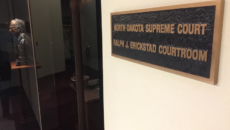Guest Post: ND Legislators Used Phony Statistics To Support Bottle Rockets Ban

It is unfortunate that HB1257, which would have lifted the ban on bottle rocket sales in North Dakota, failed on the Senate floor yesterday despite all of the available data that proves bottle rockets aren’t as dangerous as opponents would like you to think. Instead, the Senate voted to punish a product rather than people misusing a product. If Johnny throws a pencil at Timmy but misses and hits Suzy in the eye, does the Senate believe schools should ban pencils? In case you didn’t know, bottle rockets are a legal product in North Dakota.
You just can’t buy them here.
The Consumer Product Safety Commission publishes an annual report detailing fireworks injuries from the previous year. You can view data from 2010 and prior here, and the latest report detailing injuries from 2011 here. Proponents of the bottle rockets ban referred to the CPSC during the floor debate, but the misrepresented some of the information.
Here are a few of the “whoppers” told:
Whopper #1: During floor debate, Senator Dave Oehlke said “[O]ut of 9000 injuries from fireworks in general nationwide 50% of those happened with bottle rockets.”
In the history of fireworks injury reporting by the Consumer Product Safety Commission, bottle rockets have never accounted for even close to 50% of fireworks injuries. The following table shows fireworks injuries by device type, according to the CPSC. There is no data for 1998.

The average is more like 10%, the highest being 16% in 1997.
Whopper #2: Senator Sinner said, “According to the Consumer Product Safety Commission, there are almost 9,000 fireworks injuries every year and a third of those are to the eyes and nearly all of those come from bottle rockets.”
Not even close. According to the CPSC, bottle rockets cause far less eye injuries than other devices as illustrated by the graph. The table shows a breakdown of eye injuries by fireworks type, which shows firecrackers are the main cause of eye injuries, not bottle rockets.


The CPSC even publishes an infographic for those who don’t like to pour through data. Unfortunately, the cartoon characters are demonstrating improper use of fireworks by having their heads over the top of the fireworks and not moving away after they have been lit, which is a common cause of injury.
The opposition can argue that banning the sale and use of fireworks will increase safety, but they won’t show you that although fireworks consumption has gone up, the injury rates have gone down and have been trending down for over 30 years, well before the 2009 ban on the sale of bottle rockets and other previous regulations:

Pushing an agenda because you personally like or don’t like something is one thing. To massage data to support your narrative is another. To falsify data, not provide sources for your data and even use another entity’s name when citing fake data is unthinkable to me. I guess I am naïve to think that our elected officials in North Dakota are above that.
I truly feel sorry for Senator Sinner’s nephew, for Senator Sinner’s brother who testified at the Senate Judiciary Committee hearing for HB 1257 and the rest of the Sinner family. Senator Sinner’s nephew is blind in one eye. As an innocent bystander, he was struck in the eye by a bottle rocket.
As an innocent bystander in three drunk driving accidents, I understand the frustration of being victims of other people’s terrible actions. My dad is the camera man when my family members run half marathons, but I know he would rather be running with them. He can’t because a drunk driver severed his leg and left him with a titanium rod which limits some of the things he can do. We’ll still have a beer now and then and we wouldn’t even think of telling other people they shouldn’t just because of our experiences.
I am mad at the guy who passed out drunk behind the wheel, crashed through our fireworks stand and stopped 5 feet from rolling over my head. I am mad at the guy who severely injured his own wife and nearly killed me and my dad, leaving him with a rod in his leg. I am mad at the guy who ran into me and my wife while we were sitting at a stop sign in January. I am mad at the person who lit a bottle rocket near Senator Sinner’s nephew and ruined his vision along with other aspects of his life. I am not mad at alcohol and I am not mad at bottle rockets.
Tonight, someone is going to get wasted drunk. They are going to drive. They are going to crash. They will injure or kill an innocent bystander. They will be charged with a DUI. Here’s what won’t happen: We won’t talk about banning alcohol. We won’t talk about banning certain types of alcohol, like whiskey, because people can get drunk faster off whiskey than beer. We will punish the individual. We punish people and their actions, not products.
About this data and more data for the skeptics and nerds:
The CPSC conducts a special study between the dates of June 17 and July 17 where they break down injuries by different categories. The graphs and tables presented previously use these statistics, so rather than seeing 9,600 total injuries for 2011, you will see 6,200 between the dates of June 17 and July 17, 65% of the total fireworks-related injuries for 2011.
The CPSC rounds their data, so the percentages may be off somewhat. For example, the infographic shows 6% of injuries belonging to bottle rockets while calculating the data in the report yourself shows 4.84%. If there were 341 bottle rocket injuries in 2011, that comes out to 5.5% which rounds to 6%. But they also round 341 down to 300.
The data showing eye injuries by fireworks type starts in 2002 because it was the first year that the CPSC began distinguishing between bottle rockets and other rockets as related to eye injuries.







